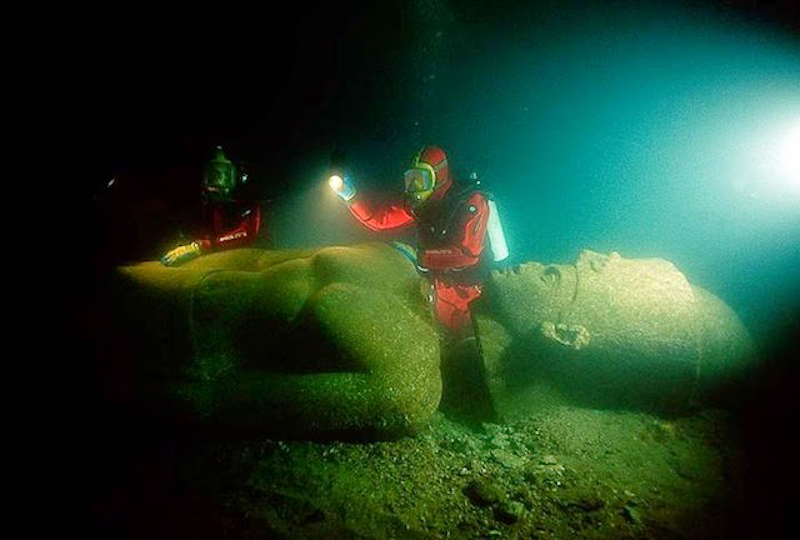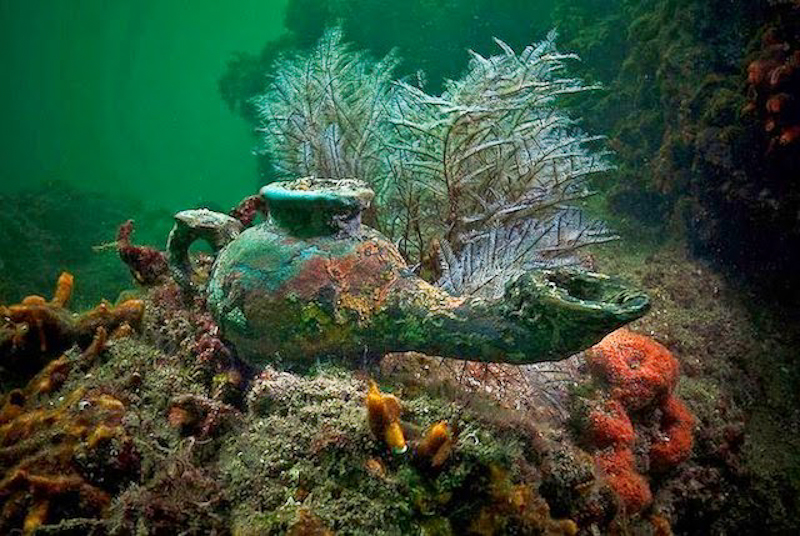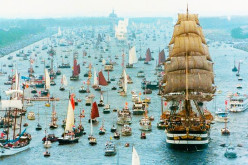Lost Egyptian City Found After 1,200 Years
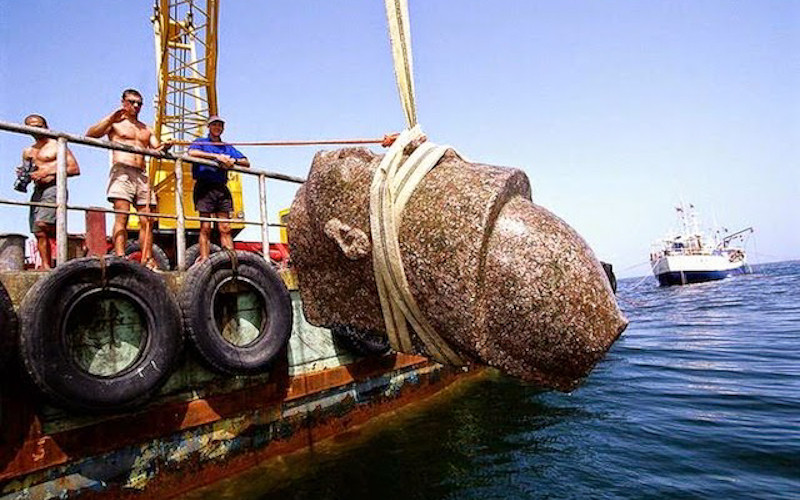
The ancient Egyptian city of Heracleion was once a legend, something known to modern man only by myth and ancient historians. So when its ruins were discovered by French underwater archaeologist Franck Goddio in 2000, no one was expecting to find it.
The city, also called Thonis (by the Greeks), vanished from the earth about 1200 years ago, and in 2000 was found. The city is located within an overall research area of 11 by 15 kilometres in the western part of today’s Aboukir Bay, Egypt.
Here are some of the treasures they discovered:
– The remains of more than 64 ships buried in the thick clay and sand that covers the sea bed
– Gold coins and weights made from bronze and stone
– Giant 16-ft statues along with hundreds of smaller statues of minor gods
– Slabs of stone inscribed in both ancient Greek and ancient Egyptian
– Dozens of small limestone sarcophagi believed to have once contained mummified animals
– Over 700 ancient anchors for ships
Evidence shows that Heracleion slipped into its watery grave sometime in the 6th or 7th century AD. The discovery of Heracleion will now add depth and detail to our knowledge of the ancient world, because among the discoveries, there are perfectly preserved inscribed pillars decorated with hieroglyphics.
Share this amazing discovery of the ancient city with your cool and crazy friends! Pass it on!

Statue of God Hapi. Never before has the statue of a god of this size been discovered in Egypt, which indicates Hapy’s importance for the Canopic branch, the largest and most important of the Nile branches at that time.
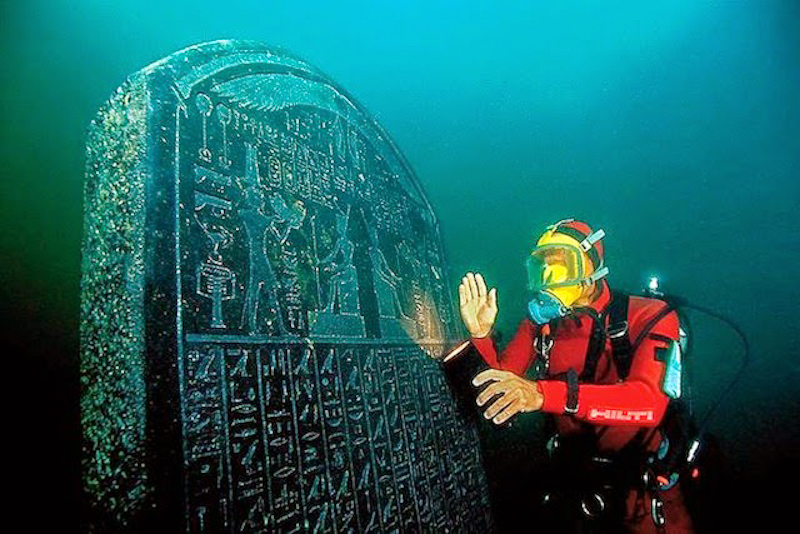
Intact engraved Thonis-Heracleion stele of 1.90 m height, commissioned by Nectanebo I (378-362 BC) and almost identical to the Naukratis stele in the Egyptian Museum in Cairo. Its text names the site where it was erected: Thonis.
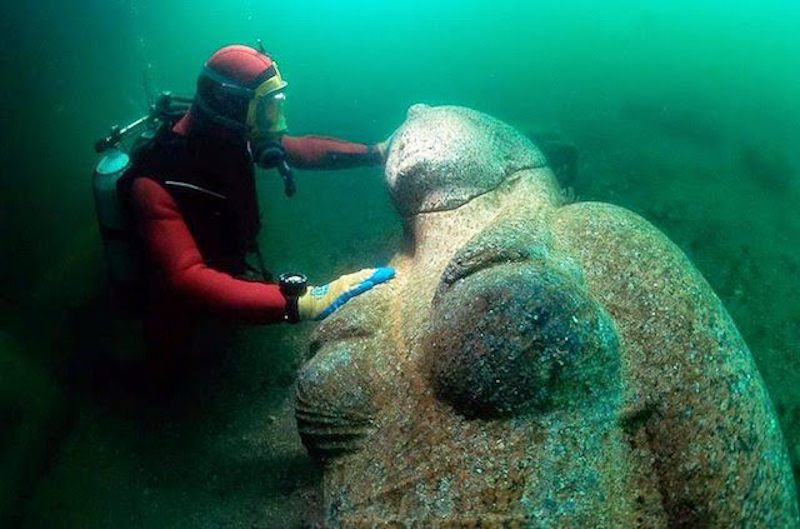
Colossal red granite statue of a Ptolemaic queen, 4.9 m high and weighing 4 tons, found close to the great temple of sunken Heracleion.
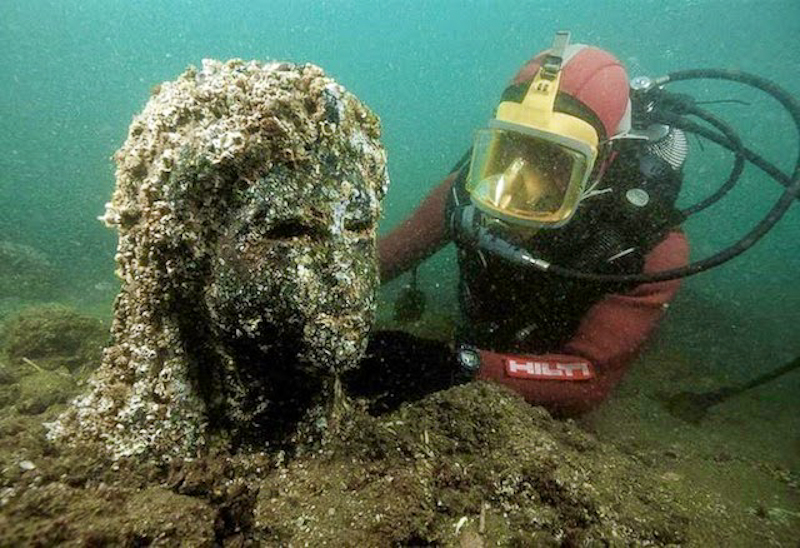
One of the finest finds in Abukir Bay is the remarkable dark stone statue of a 3rd century Ptolemaic queen, very probably Cleopatra II or Cleopatra III, wearing the tunic of the goddess Isis.

The head of a colossal red granite statue of a pharaoh is raised to the surface. The entire statue measures over 5 metres and was found close to the great temple of sunken Heracleion.
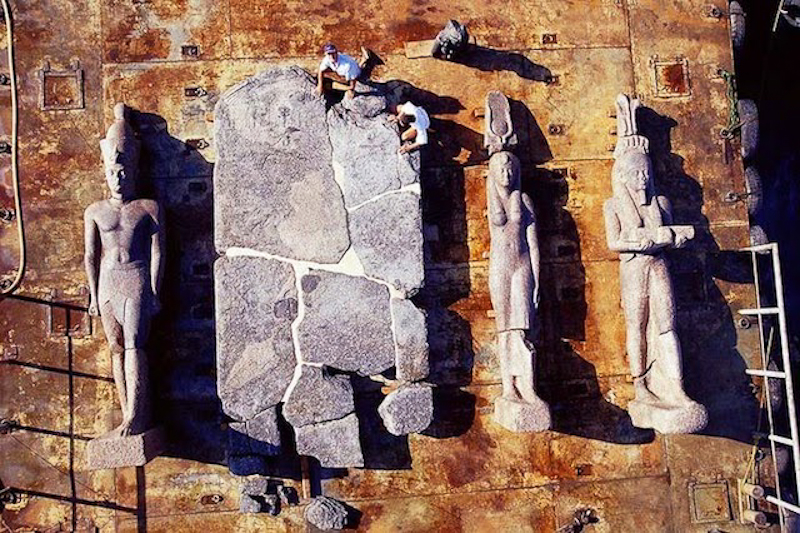
Aerial view of the colossal triad of 5-metre high red granite statues of a pharaoh, his queen and the god Hapy, dating from the 4th century BC, which stood in front of the great temple of Heracleion. They are placed on a pontoon barge together with the 17 fragments of an over 5-metre high 2nd century BC red granite stele in reassembly; the workers on the pontoon provide a notion of the dimensions of these objects.
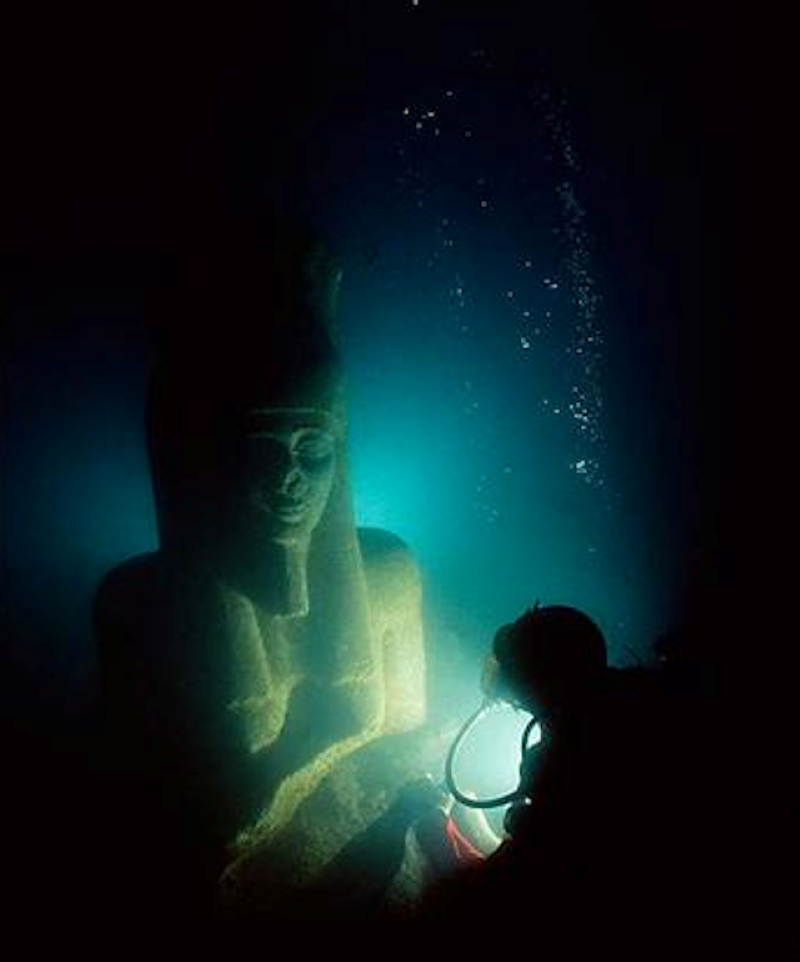
A colossal statue of red granite (5.4 m) representing the god Hapy, god of the Nile flood and symbol of abundance and fertility decorating the temple of Heracleion.
Info: Franck Goddio/Hilti Foundation, all photos by: Christoph Gerigk



